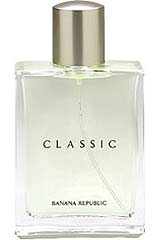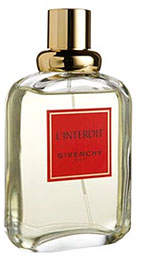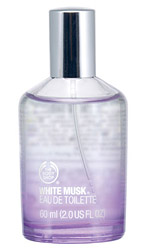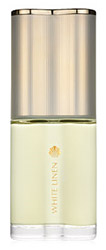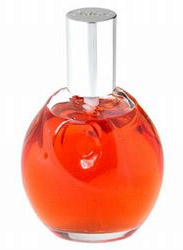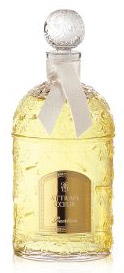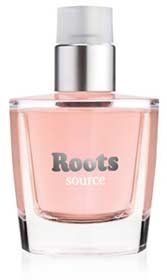Part 2 of the Perfume FAQ for common questions that keep coming up regarding perfume. You should not, by any means, stop your research at this page. If there’s a topic you’re interested in, Google has opened up a very good resource for research and knowledge. If you have a perfume related question, please leave a comment.
Q. Why do perfumes give me headaches?
A. I’m not a doctor and cannot diagnose what might be a more serious condition that you have but in my experience, related entirely to perfume, people who get perfume headaches may have smelled a particularly large dose of perfume or a particularly strong perfume. If all perfumes give you a headache, you may be sensitive to scents. Some people also get headaches from perfumes that are too sweet or cloying. Others might get headaches from perfumes that are too spicy, or sharp, the list goes on. We’re all different and so are our perfume headaches. It should be noted however, that a perfume headache does not necessarily indicate a perfume allergy. Allergies can sometimes cause headaches but if all you experience when you smell a trigger perfume is a migraine an allergy may not be what you have. It should be reiterated that I am not a medical doctor and you should consult with a licensed physician if you are having any physical ailments.
Q. What’s the deal with old lady perfume?
A. I don’t know what the deal is, but here’s a run down. Poor Chanel No. 5 often gets accused of smelling like “old lady perfume” but I find that most people who often say this are also the kind of people who have never actually gone out of their way to smell Chanel No. 5 before and are just repeating a public misconception. Old lady perfume is whatever you want to make of it. Some people will call anything over-applied an old lady perfume. Some people call any perfumes old lady perfumes. Many people equate old lady perfumes to floral heavy perfumes, lavenders, nerolis, jasmines, powdery scents, bitter scents, earthy scents, cloying scents, tuberose scents, sometimes incense-heavy fragrances get lumped into this classification too. In fact, we’d save time by saying perfumes that smell like candy, cookies, cakes, or chocolate brownies, sweet fruits, massive infusions of citrus, and giant mountains of vanilla ice cream are pretty immune to being classified as “old lady”. Many of the vintage classics made earlier than the 1980s suffer from this derogatory label. If you ask me, the phrase, “old lady perfume” should be stricken from the records as it’s an ignorant classification of a certain group of people as well as an equally ignorant classification of a huge selection of fragrances and fragrance history. For a more eloquent entry on “Old Lady Perfume”, check out Perfume Shrine >>
Q. Are designer perfumes better than non-designer?
A. No. Not necessarily. Designer perfumes are sold as a brand. Unless brands matter to you, wear what you like to smell and don’t worry about it. The composition of most designer perfumes versus non-designer such as Victoria’s Secret or celebrity fragrances are not all that different.
Q. I think I have a counterfeit fragrance on my hands, how do I confirm my suspicions?
A. Get on a fragrance forum like Basenotes or Makeupalley, take several clear photographs of your suspected fake and ask people if they can identify whether or not you’ve got a counterfeit on your hands. I personally cannot identify every single bottle as I have not seen, held, or owned every single bottle of perfume available. Therefore, I may not be able to tell you if you got swindled or not but other people might.
Q. Why is there Arabic writing on some of my perfume boxes or bottles and what does it say?
A. Your perfume was imported from another country. Possibly grey market but not necessarily counterfeit. Just to re-iterate; Arabic writing on your perfume box or bottle is not one of the indicators of a counterfeit. As for what that says, I can only assume it might say something like, “For external use only” or something equally unexciting. So rest assured, you did not stumble upon a secret message that will lead you on a journey of self-discovery and hidden treasure. That would be pretty neat though. To read about the difference between grey market fragrances and counterfeits, go Here >>
Q. Someone told me that all perfumes expire after two years. Is this true?
A. No. Perfumes do not have a set expiry date. Some last for much longer than two years, other expire in even less time than that if they’re not stored properly. How long your perfume lasts depends on how well you take care of it and what kinds of components it was made with. A bottle of citrus-heavy fragrance for instance, is more volatile and prone to spoilage. Generally, the two years to spoilage date is given as a precaution, not a hard and fast date that all perfumes will expire by. The rule of thumb I go by is, if the liquid is clear, it hasn’t changed color, and it still smells the same then it’s probably fine to use. I also recommend keeping perfumes out of the sunlight and in an environment with a relatively stable temperature to prolong their lifespan.
Q. Why do people say it’s bad to spray perfume in your hair or on your clothes?
A. I’m not a hair or clothing expert but I assume spraying hair is a no-no due to the alcohol base in most perfumes which can dry out or damage your hair. As for the clothes thing, perfumes contain coloring agents so I assume if you spray enough you might stain your clothes.
Q. Is it true that perfumes contain ingredients that come from a deer’s butt?
A. You won’t believe how often this gets asked. “Deer’s butt ingredients”, more eloquently known as, natural musk, used to be widely present in perfume. In some rare instances, musk, and other such natural animal-based ingredients still are but the use of natural musks and animal ingredients is rare in modern perfumery due to the versatility and efficiency of synthetic musks.
Q. How do you train your nose to pick out individual ingredients in scents?
A. Picking out individual smells in a fragrance is a purely subjective exercise for a hobbyist like me. But I find that as I smell more perfumes, fragrance oils and essential oils, I start to recognize these same smells in certain perfumes and can sometimes pick them out. So it’s just a matter of the more you smell, the more you know.
Got any questions not addressed in this FAQ? Please leave a comment.
